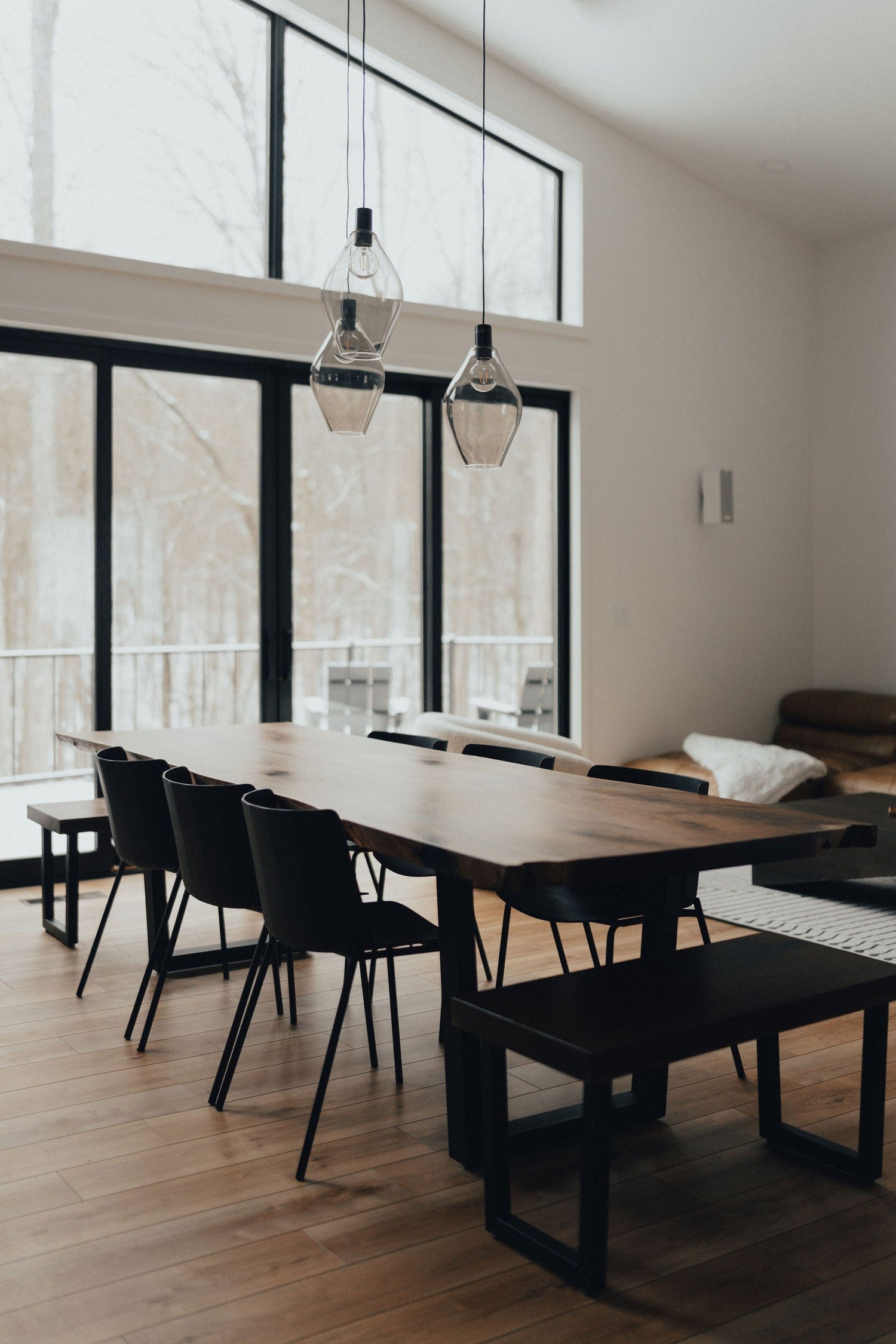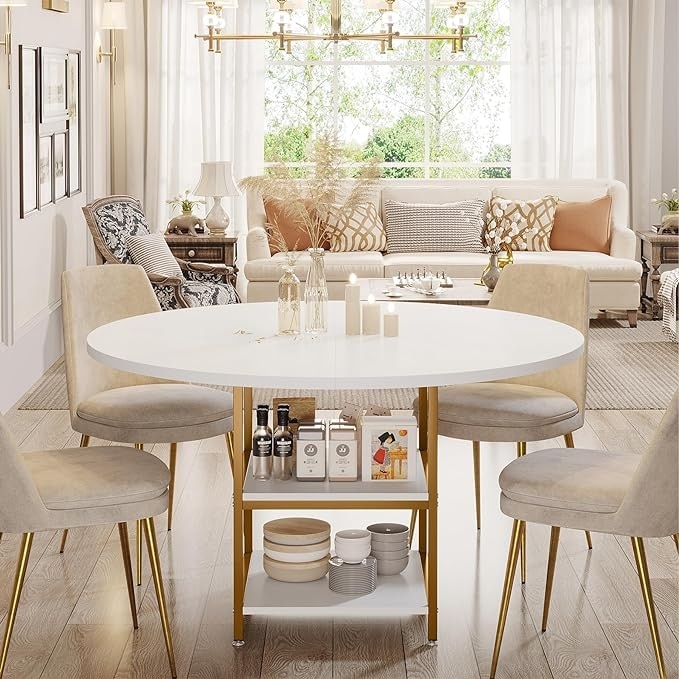The Best Materials for Durable and Elegant Dining Room Table Legs
The Best Materials for Durable and Elegant Dining Room Table Legs
Blog Article
From Traditional to Modern: Discover the Suitable Eating Area Table Legs for Your Style
The selection of dining-room table legs plays an essential function in defining the total personality of your room, connecting the space between traditional workmanship and contemporary visual appeals. While traditional styles such as cabriole and turned legs stimulate a feeling of classic sophistication, contemporary designs like barrette and geometric choices offer an opportunity for striking aesthetic interest. Evaluating the best balance between these designs requires a nuanced understanding of your existing design and personal preference. As you take into consideration these components, the concern stays: exactly how can you perfectly incorporate these diverse leg styles to create a harmonious dining experience?
Understanding Table Leg Styles
The selection of dining area table leg styles can substantially affect both the visual appeals and functionality of the area. Each leg design contributes special visual components and useful functions, satisfying varied layout choices and use requirements. Recognizing these designs is essential for selecting the appropriate eating table that lines up with your total interior design vision.
As an example, conical legs use a tidy, traditional appearance that can boost an area's sophistication, while pedestal bases offer stability and take full advantage of legroom, making them excellent for smaller rooms. Hairpin legs, a trademark of mid-century modern-day layout, present a commercial style, enabling for an airy, open feel. Similarly, trestle legs evoke rustic charm, giving durable support and a feeling of eternity.
Moreover, the selection of products plays a substantial duty. Wooden legs can bring warmth and texture, whereas metal options frequently communicate a sleek, contemporary ambiance. Inevitably, comprehending table leg designs is necessary for creating a cohesive dining location that reflects personal style while ensuring usefulness and comfort. By thoughtfully thinking about these elements, you can enhance both the visual and practical charm of your dining room.
Conventional Table Leg Options
When selecting dining area table legs, typical choices typically personify classic beauty and craftsmanship. These styles show a rich heritage and a dedication to top quality, making them optimal for those who appreciate classic appearances.
One of one of the most famous standard leg designs is the cabriole leg, defined by its stylish rounded shape. This style usually features decorative carvings and is most generally discovered in Queen Anne and Chippendale furniture. Another preferred alternative is the turned leg, which flaunts a collection of smooth, rounded forms that offer a traditional appearance while maintaining security.
Moreover, the straight leg, while straightforward, provides a unadorned and tough framework that can blend effortlessly with a variety of tabletop designs. For those attracted to ornate outlining, claw-and-ball feet legs evoke a sense of majesty and can offer as a sensational focal factor in any type of dining space.
Finally, stand bases, although not purely legs, supply an alternative typical alternative that enables ample legroom and can be magnificently sculpted. Each of these standard leg designs contributes to the overall setting of an eating space, weding feature with visual allure.

Modern Table Leg Styles
Modern table leg designs supply a varied variety of styles that stress tidy lines and ingenious materials. These styles frequently prioritize functionality while functioning as striking focal factors within an eating room. Minimal aesthetics are widespread, with legs crafted from products such as metal, glass, and engineered timber, which add to a contemporary and ventilated feeling.
One prominent design is the hairpin leg, identified by its slender, conical framework that offers stability without frustrating the table top (dining room table legs). This style is commonly discovered in mid-century contemporary furnishings and can easily enhance numerous table forms. One more fad is the use of geometric shapes, where legs may tackle angular or unbalanced types, adding visual interest and a touch of virtuosity

Mixing Styles for Distinct Spaces
Commonly, house owners seek to develop distinct eating rooms that show their individual style by mixing numerous style aspects. This strategy permits the unification check of diverse aesthetic appeals, resulting in a harmonious yet distinct environment. As an example, pairing a rustic wood table with sleek, contemporary metal legs can produce an eye-catching contrast that elevates the area's general charm.
Additionally, incorporating vintage table legs with modern tabletops can stimulate a feeling of background while maintaining a modern perceptiveness. Such mixes not only showcase private taste however likewise motivate creativity, permitting home owners to curate a space that feels both individual and inviting.
Shade plays an important duty in this blending process; picking table legs that enhance or comparison with the existing shade plan can boost visual passion. Whitewashed legs can soften the daring of a dark table surface, developing a well balanced visual.
Tips for Selecting the Right Legs
Selecting the right table legs is important for achieving both functionality and aesthetic charm in your dining space. Begin by taking into consideration the general style of your area. Traditional setups take advantage of legs that include complex carvings or turned styles, while modern spaces might call for smooth, minimalist styles.
Next, evaluate the height and stability of the legs. dining room table legs. Basic dining tables vary between 28 to 30 inches in height, so make sure the legs enhance this dimension for convenience. Furthermore, durable materials, such as hardwood or metal, can improve security and longevity
Review the leg shape as next well-- alternatives consist of straight, tapered, or stand styles. Straight legs supply a timeless look, while conical legs can include a touch of sophistication. Pedestal bases offer adequate legroom and are suitable for smaller sized rooms.
Verdict
In recap, choosing the ideal eating area table legs needs mindful consideration of both standard and modern designs. By integrating leg design, height, and product with the overall decor, a natural and inviting ambience can be attained.
The selection of eating room table leg designs can dramatically affect both the looks and capability of the room. Eventually, comprehending table leg designs is vital for creating a natural eating area that shows personal style while making sure functionality and comfort.One of the most renowned standard leg styles is the cabriole leg, identified by its elegant rounded form. Straight legs supply a classic look, while tapered legs can add a touch of elegance.In summary, choosing the suitable eating room table legs pop over here calls for careful consideration of both modern-day and standard designs.
Report this page